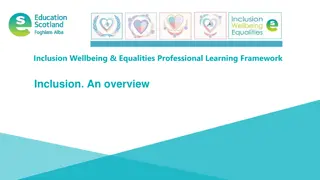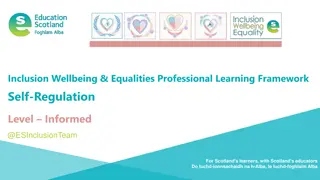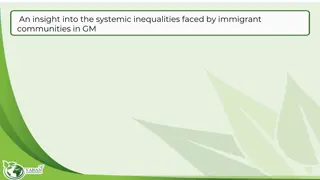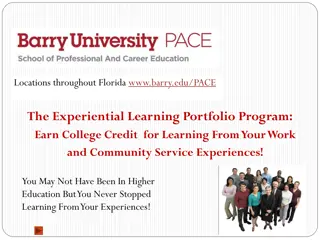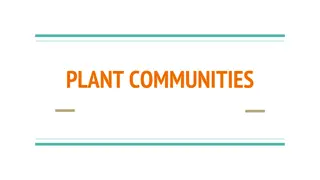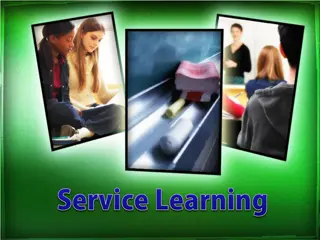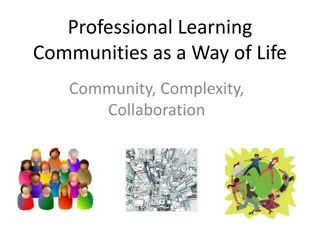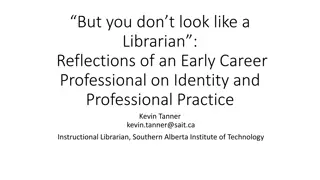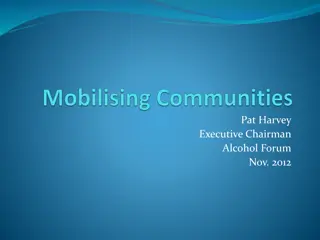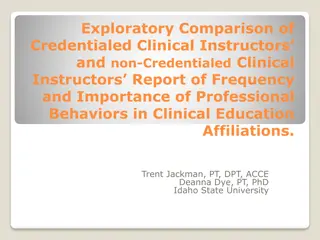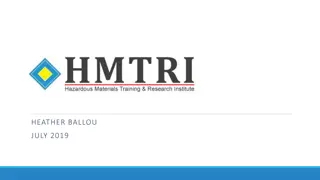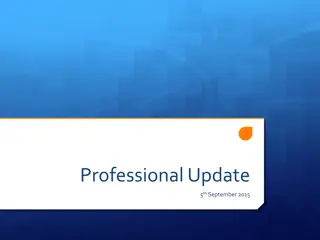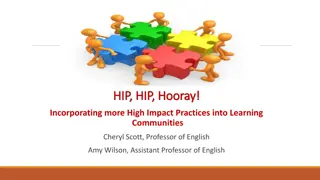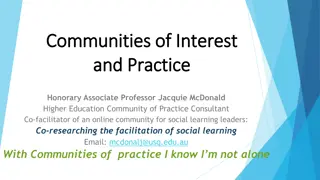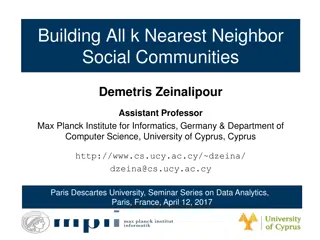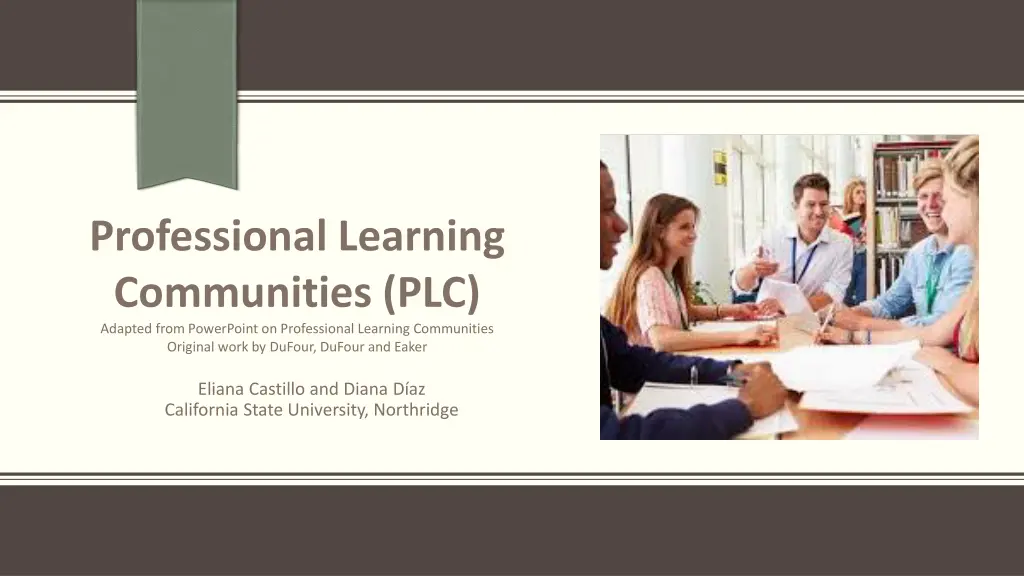
Effective Professional Learning Communities (PLCs)
Explore the concept of Professional Learning Communities (PLCs) and their core values including a culture of collaboration, teamwork, and data-driven decisions to enhance student learning outcomes. Learn how to start PLCs at your school by establishing team norms, scheduling collaboration time, and setting measurable performance goals.
Download Presentation

Please find below an Image/Link to download the presentation.
The content on the website is provided AS IS for your information and personal use only. It may not be sold, licensed, or shared on other websites without obtaining consent from the author. If you encounter any issues during the download, it is possible that the publisher has removed the file from their server.
You are allowed to download the files provided on this website for personal or commercial use, subject to the condition that they are used lawfully. All files are the property of their respective owners.
The content on the website is provided AS IS for your information and personal use only. It may not be sold, licensed, or shared on other websites without obtaining consent from the author.
E N D
Presentation Transcript
Professional Learning Communities (PLC) Adapted from PowerPoint on Professional Learning Communities Original work by DuFour, DuFour and Eaker Eliana Castillo and Diana D az California State University, Northridge
What is a Professional Learning Community? (PLC) It is a group of educators that meets regularly, shares expertise, and works collaboratively to improve teaching skills and the academic performance of students. The key to improved learning for students is continuous. (The Glossary of Education Reform, 2014)
What are the Core Values of PLCs? (DuFour, 2004) Ensuring that students learn Learning for all A culture of collaboration Teamwork A focus on result Data-Driven decisions
Ensuring that students learn Learning for all Questions to drive PLCs: 1. What do we want each student to learn? 2. How will we know when each student has learned it? 3. How will we respond when a student experiences difficulty in learning? 4. How will we respond when they already know it?
A culture of collaboration Teamwork Benefits of successful collaboration include: Gains in student achievement Increased confidence among all staff Teachers work off of individual s strengths and accommodate weaknesses Ability to test new ideas, materials, and methods Support for new teachers
A focus on results Data-Driven Decisions PLCs teams judge their effectiveness on the basis of results. They: identify; establish a goal; work together; and progress monitor to improve student achievement
How can you get PLCs started at your school? Keys to Collaboration Establish team norms Schedule time for collaboration in the school day and calendar Ensure collaboration time has a focus on learning Teams should focus on critical questions Products of collaboration should be documented and shared Set specific and measurable team performance goals
So What Now? Changing the Focus Old Focus Old Focus New Focus New Focus Every student can can learn Every student will learn Focus on teaching teaching Focus on learning learning Isolation Isolation Collaboration Collaboration Assessment OF (Summative) Failure is is an option OF learning Assessment FOR (Formative) Failure is not is not an option FOR learning
Conclusion PLCs are highly effective because it honors the knowledge and experience of teachers through collaborative inquiry. Teachers share new ideas, current practice, and evidence of student learning in a safe, professional learning environment. https://www.youtube.com/watch?v=r2UCLZDWdyA&ab_channel=PearsonNorthAmerica
References DuFour, R. (2004). What Is a professional Learning Community? Educational Leadership. Dufour, R., Dufour, R., & Eaker, B. (n.d.). New Insights into Professional Learning Communities at Work. The Challenge of Change: Start School Improvement Now!,87-104. doi:10.4135/9781452218991.n8 Hord, S. M. (2009). Professional learning communities. National Staff Development Council,30(1). Retrieved from www.NSDC.ORG. Vescio, V., Ross, D., & Adams, A. (2008). A review of research on the impact of professional learning communities on teaching practice and student learning. Teaching and Teacher Education,24(1), 80-91. doi:10.1016/j.tate.2007.01.004


